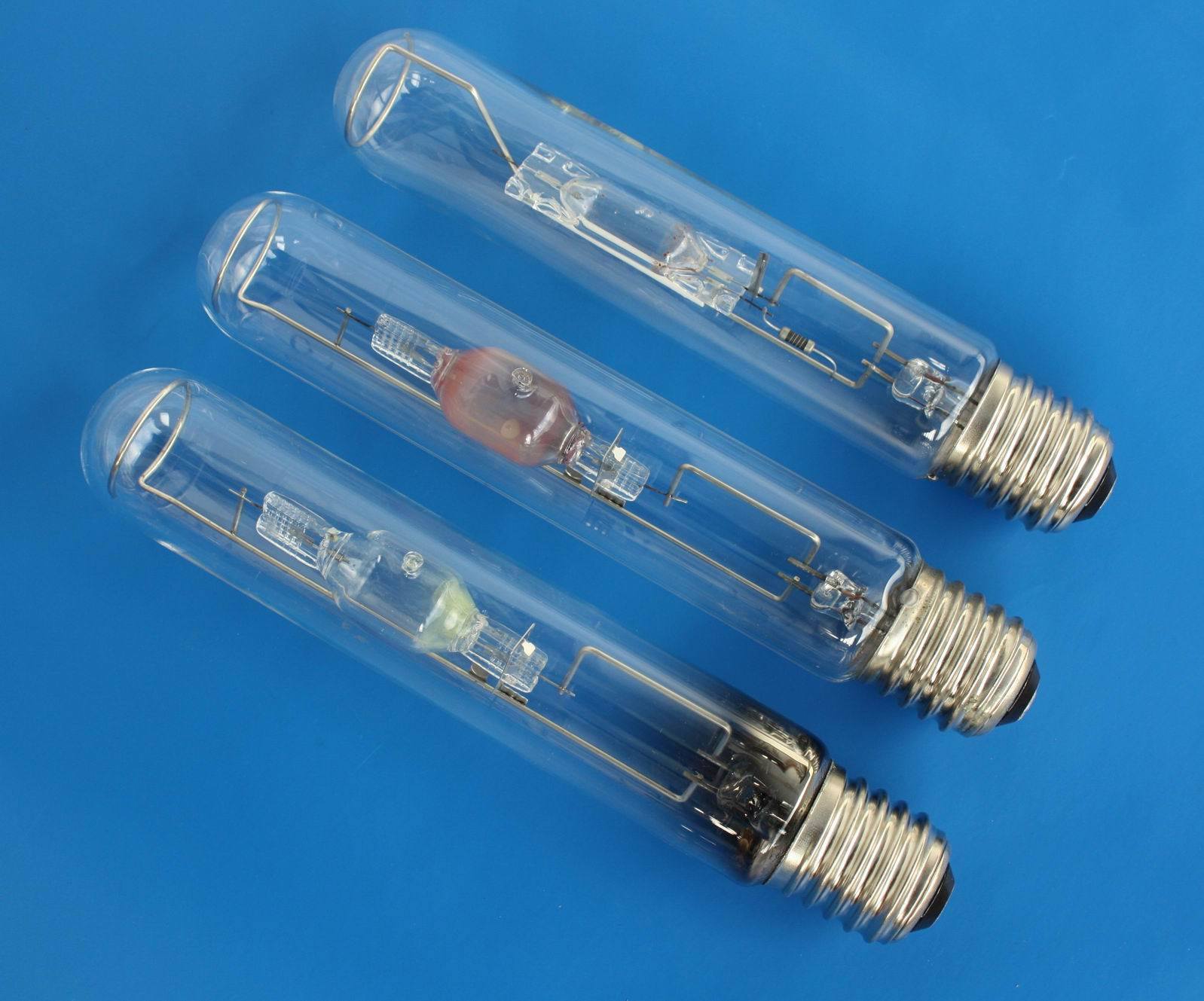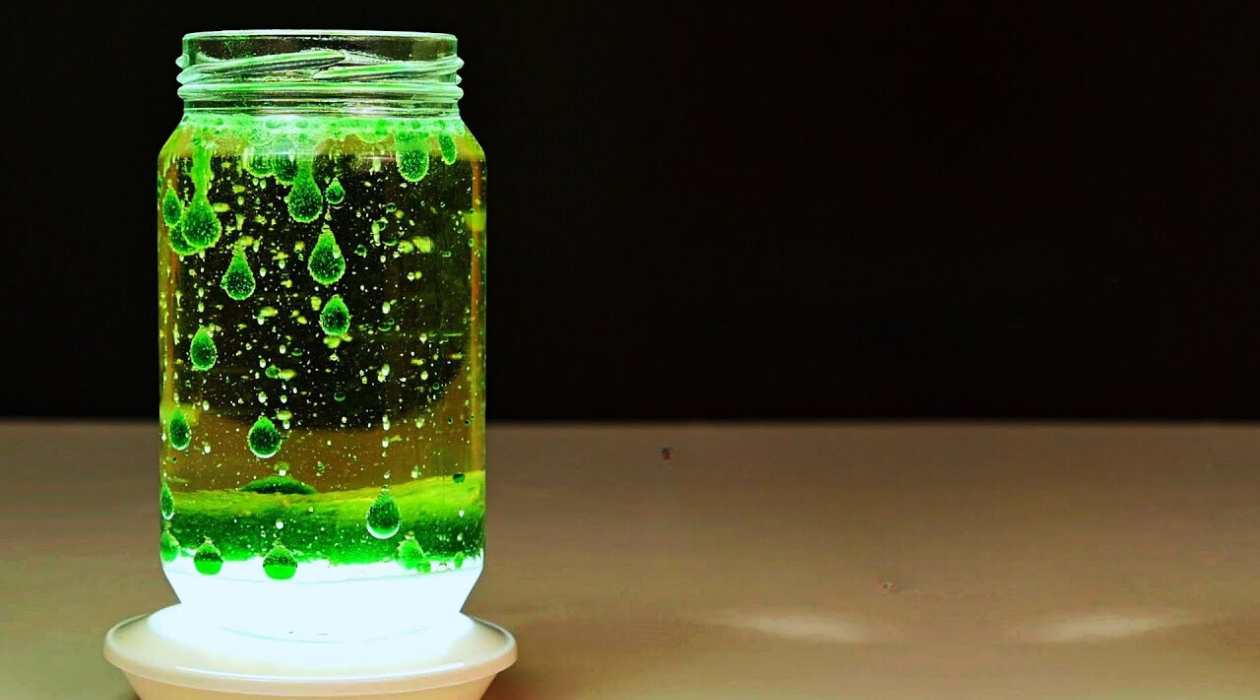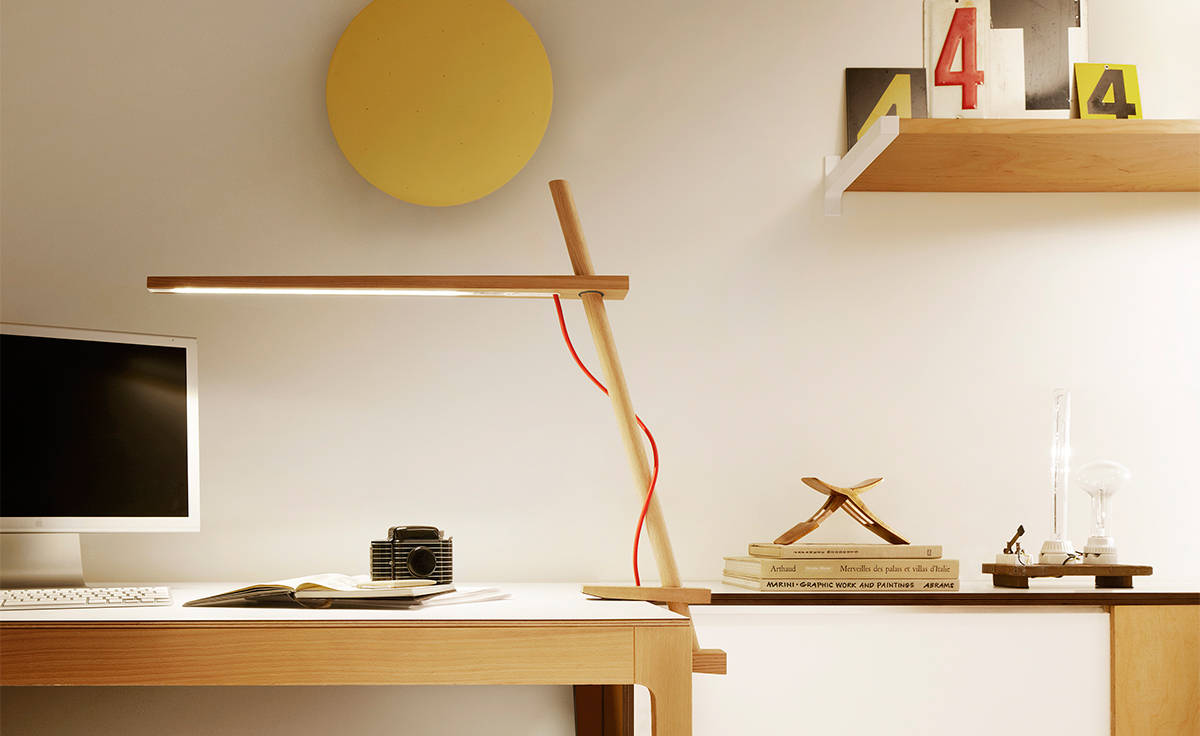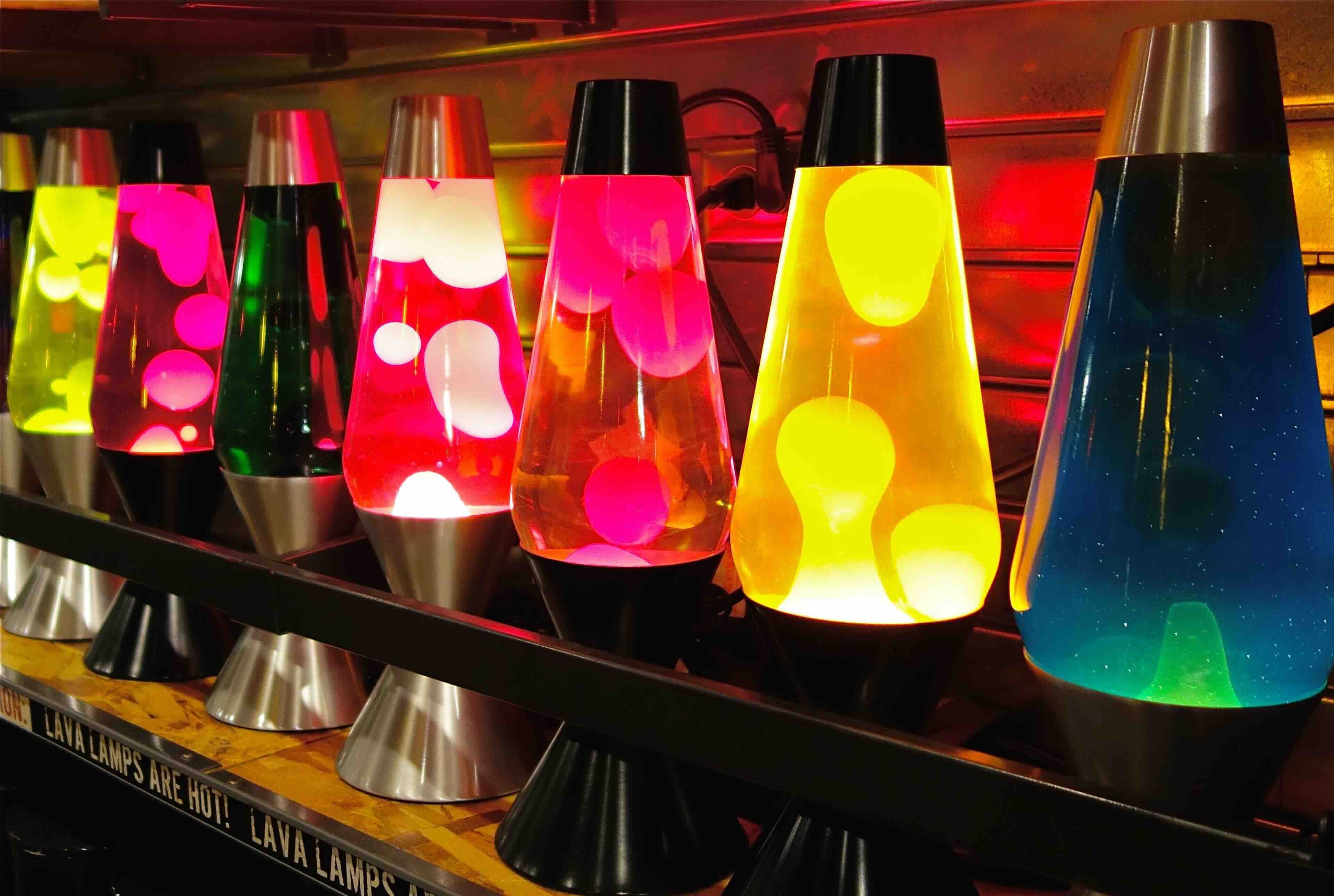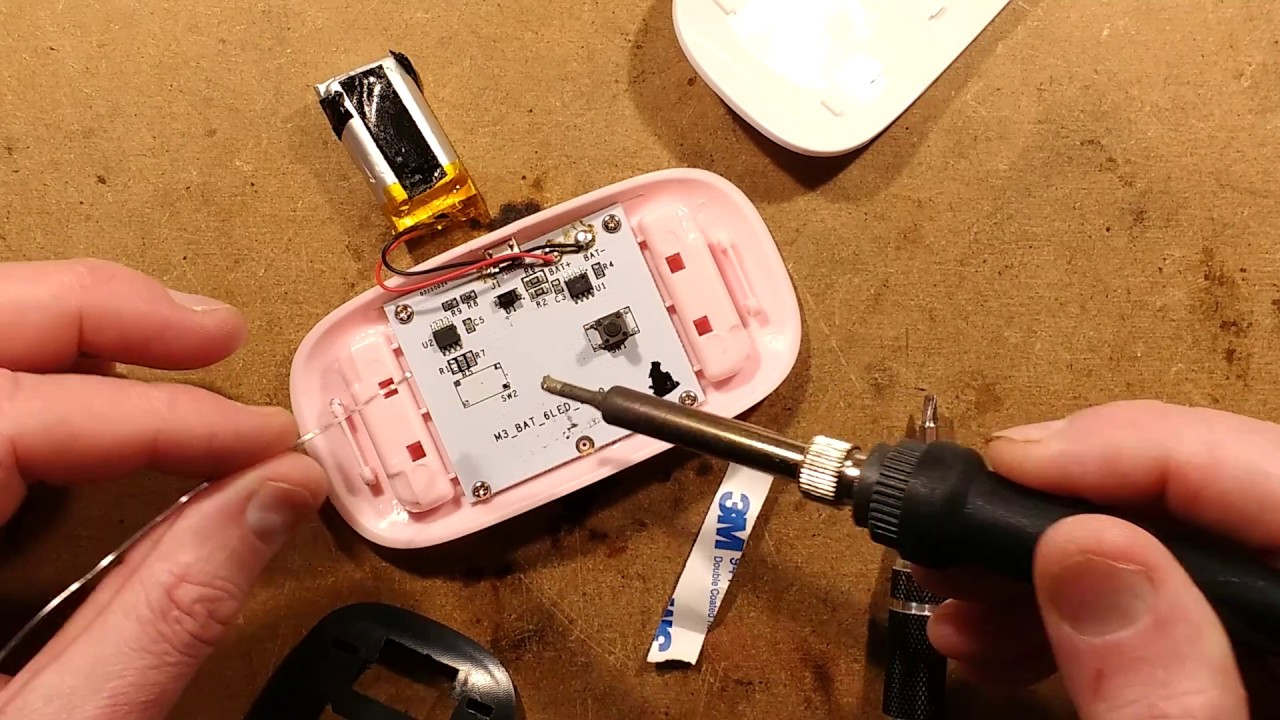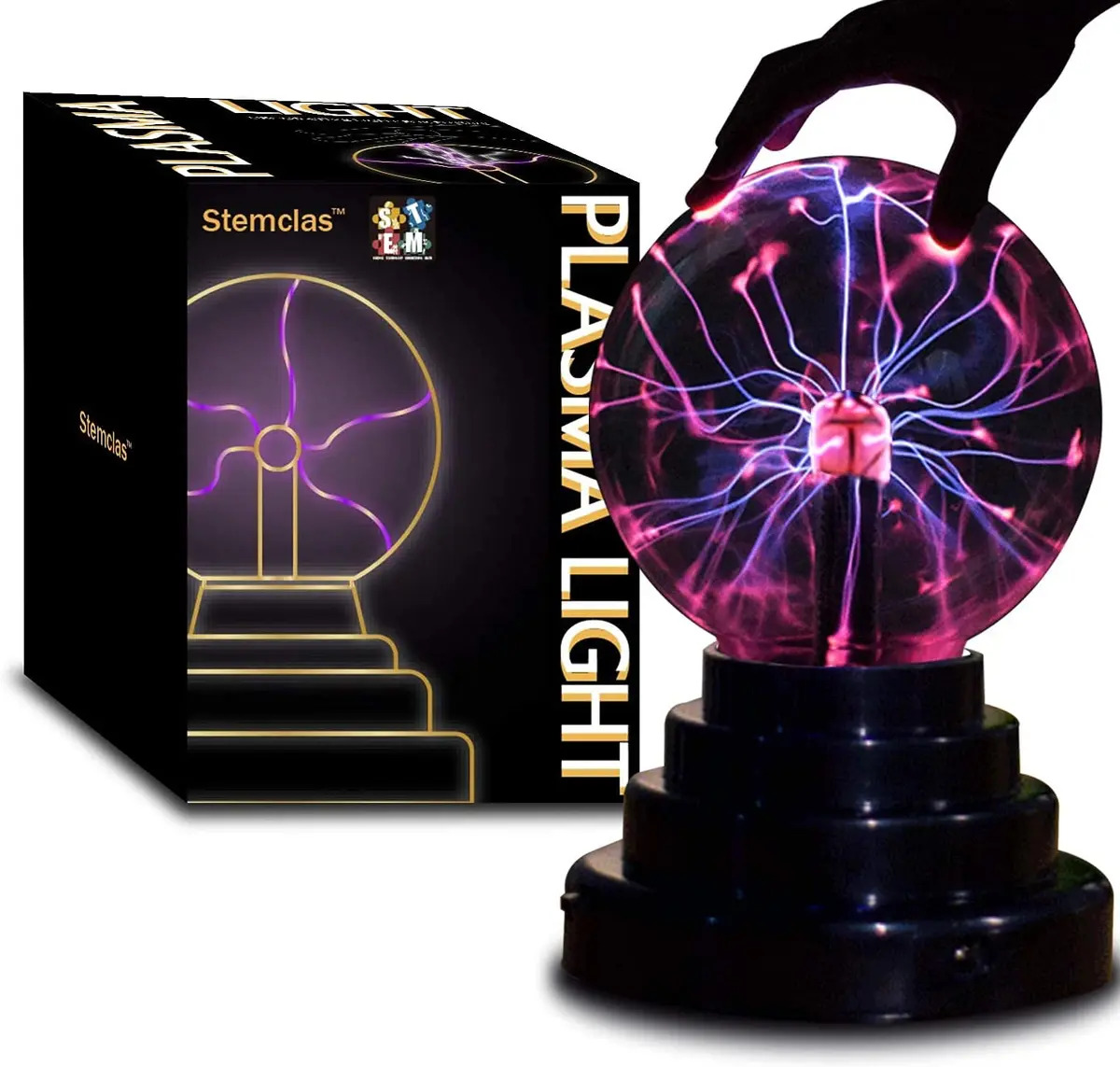

Furniture
How A Plasma Ball Lamp Works
Modified: February 28, 2024
Discover the fascinating science behind plasma ball lamps and how they add a touch of brilliance to your furniture ensemble. Learn more now!
(Many of the links in this article redirect to a specific reviewed product. Your purchase of these products through affiliate links helps to generate commission for Storables.com, at no extra cost. Learn more)
Introduction
Plasma ball lamps are not only mesmerizing decorative pieces but also fascinating scientific wonders. With their swirling, dancing electric arcs and vibrant displays of light, these lamps have captivated people of all ages for decades. Understanding how a plasma ball lamp works can provide insight into the intriguing world of plasma physics while also adding a touch of magic to your living space.
In this article, we will delve into the history, components, and mechanics behind plasma ball lamps. We will explore the science of plasma and how it is generated and manipulated to create the captivating visual effects in these lamps. Additionally, we will discuss the applications, safety precautions, and maintenance tips for plasma ball lamps. So, let’s embark on a journey into the fascinating realm of plasma and uncover the mysteries behind these captivating decorative pieces.
But first, let’s take a step back and explore the history of plasma ball lamps.
Key Takeaways:
- Plasma ball lamps are a mesmerizing blend of art and science, captivating audiences with their swirling electric arcs and vibrant displays of light. Understanding their history, components, and mechanics adds a touch of magic to any living space.
- The diverse applications of plasma ball lamps range from decorative lighting to educational tools, art installations, and therapeutic aids. While enjoying their enchanting beauty, prioritizing safety and proper maintenance ensures a captivating and safe experience.
Read more: How Does A Lamp Work
History of Plasma Ball Lamps
The concept of plasma ball lamps can be traced back to the mid-1970s when Nikola Tesla, the famous inventor and electrical engineer, first demonstrated the phenomenon of electric discharge through gases. However, it wasn’t until the early 1980s that the first commercially available plasma ball lamps hit the market.
The original design of the plasma ball lamp was created by Bill Parker, an industrial sculptor and artist. He was inspired by Tesla’s experiments and sought to create a visually stunning display of electric arcs enclosed within a glass sphere. Parker’s invention quickly gained popularity as a novelty item and became an iconic symbol of the psychedelic era.
Since then, plasma ball lamps have evolved both in design and technology. Early models featured a single large glass sphere with streamers of plasma emanating from a central electrode. However, modern plasma ball lamps come in various sizes and shapes, including mini desktop versions, larger standalone lamps, and even plasma globes with multiple glass spheres.
Throughout the years, plasma ball lamps have become synonymous with art, science, and entertainment. They have been featured in movies, music videos, and stage performances, captivating audiences with their mesmerizing displays of light and energy.
Now that we have explored the history of plasma ball lamps, let’s take a closer look at the components that make up these captivating devices.
Components of a Plasma Ball Lamp
A plasma ball lamp is made up of several key components that work together to create the mesmerizing visual effects. Let’s take a closer look at these components:
- Glass Sphere: The most prominent part of a plasma ball lamp is the glass sphere. Usually made of hand-blown borosilicate glass, the sphere acts as a housing for the plasma and serves as a barrier between the electrical discharge and the surrounding environment.
- Electrode: At the center of the glass sphere, there is an electrode connected to a high-frequency power source. This electrode is typically a metal coil or rod that emits the electric arcs and is responsible for generating the plasma.
- Gas Mixture: Inside the glass sphere, there is a mixture of gases, commonly including neon, argon, and xenon. These gases play a crucial role in supporting the formation of plasma and determining the colors and intensity of the emitted light.
- Transformer: Plasma ball lamps require a high voltage power source to create the electric field necessary for plasma formation. A transformer is used to step up the standard household voltage to the high voltage levels required for the lamp to operate.
- Base and Controls: The base of a plasma ball lamp houses the transformer and other electrical components. It often includes control buttons or switches that allow users to adjust the intensity of the electric arcs or turn the lamp on and off.
Now that we have a better understanding of the components that make up a plasma ball lamp, let’s delve into the fascinating mechanics behind how these lamps actually work.
How Does a Plasma Ball Lamp Work?
A plasma ball lamp works on the principle of electric discharge through gases. When the lamp is turned on and connected to a power source, several intricate processes occur to create the mesmerizing display of plasma and light.
Let’s break down the working mechanism of a plasma ball lamp:
- Generating Plasma: The high-frequency power source connected to the electrode inside the glass sphere generates a high voltage electric field. This electric field ionizes the gas mixture inside the sphere by stripping electrons from the gas atoms, creating a plasma.
- Electric Arcs: Once the plasma is formed, it conducts electricity and allows the flow of electrons. The high voltage electric field pulls the free electrons towards the electrode, creating electric arcs or streamers that propagate from the electrode to the inner surface of the glass sphere.
- Electron Excitation: As the electric arcs propagate through the plasma, they collide with gas atoms along the way. These collisions excite the atoms, causing them to emit photons of light. The colors of the emitted light depend on the specific gases and their energy states.
- Visual Effects: The electric arcs follow the path of least resistance, which is determined by the shape of the glass sphere and the positioning of the electrode. This pathway can vary depending on the user’s interaction with the lamp. When touching the outer surface of the lamp, the plasma is attracted to the point of contact, creating mesmerizing tendrils and lightning-like patterns.
The interaction between the electric field, plasma, and the glass sphere creates a beautiful display of light and energy that is characteristic of plasma ball lamps.
Now that we understand the basics of how a plasma ball lamp works, let’s dive deeper into the physics behind plasma and its role in these lamps.
The Role of Plasma in Plasma Ball Lamps
Plasma plays a crucial role in the operation and visual effects of plasma ball lamps. It is the fourth state of matter, distinct from solids, liquids, and gases. In a plasma ball lamp, the plasma is created by ionizing a gas mixture inside the glass sphere through the application of a high voltage electric field.
Here are some key roles that plasma plays in plasma ball lamps:
- Conduction of Electricity: Plasma is an excellent conductor of electricity. Once the gas mixture inside the glass sphere is ionized, it becomes a plasma and allows the flow of electrons. This allows the electric arcs to propagate through the plasma, creating the mesmerizing visual effects seen in the lamp.
- Electron Excitation and Emission of Light: As the electric arcs move through the plasma, they collide with gas atoms. These collisions excite the gas atoms, causing them to release photons of light. The specific gases used in the lamp determine the colors and intensity of the emitted light, adding to the visual appeal of the lamp.
- Interaction with Electric Fields: Plasma interacts with electric fields, responding to changes in voltage and shape. When users touch the outer surface of the glass sphere, the plasma is attracted to the point of contact, creating tendrils and streamers that follow their fingers. This interactive aspect adds to the magical and captivating nature of plasma ball lamps.
- Energy Dissipation: The plasma in a plasma ball lamp also acts as a means of dissipating energy. The plasma absorbs and disperses the energy from the high voltage electric field, preventing excessive heating or damage to the lamp’s components.
It’s important to note that the plasma within a plasma ball lamp is low-temperature plasma. It is safe to touch and does not pose any significant risks when used as intended.
Now that we have a better understanding of the role of plasma in plasma ball lamps, let’s explore the underlying physics that govern the operation of these mesmerizing devices.
Read more: How Does A Touch Lamp Work
Understanding the Physics Behind Plasma Ball Lamps
To truly appreciate the mesmerizing display of a plasma ball lamp, it’s important to understand the fundamental physics principles at play. These lamps operate based on the principles of electric discharge and plasma physics. Let’s delve into the key physics concepts behind plasma ball lamps:
- Electric Discharge: The phenomenon of electric discharge occurs when a high voltage is applied to a gas, causing it to ionize and create a conductive path for electric current. In the case of plasma ball lamps, the gas mixture inside the glass sphere is ionized by a high-frequency electric field, leading to the formation of a plasma.
- Plasma: Plasma is often referred to as the fourth state of matter, distinct from solids, liquids, and gases. It consists of ionized gas particles, including free electrons and positively charged ions. The presence of charged particles in the plasma allows it to conduct electricity and respond to electric and magnetic fields.
- Gas Excitation: As the electric arcs move through the plasma inside the glass sphere, they collide with gas atoms. These collisions provide energy to the gas atoms, exciting them to higher energy states. When the excited atoms return to their ground states, they emit photons of light, resulting in the colorful and vibrant glow seen in plasma ball lamps.
- Electric Fields: The high voltage electric fields generated by the power source in the plasma ball lamp play a crucial role in shaping and controlling the plasma. The electric fields attract or repel the plasma, dictating the flow of electric arcs and the formation of tendrils and streamers. Users can interact with the lamp by touching the outer surface, causing the plasma to concentrate around their fingers.
The physics behind plasma ball lamps is a fascinating blend of electromagnetism, gas ionization, and light emission. These lamps provide a visual representation of how electricity interacts with plasma, allowing us to witness the beauty and complexity of these physical phenomena.
Now that we have explored the physics principles behind plasma ball lamps, let’s dive into the process of generating plasma in these captivating devices.
Generating Plasma in a Plasma Ball Lamp
Generating plasma in a plasma ball lamp involves ionizing a gas mixture inside the glass sphere. This process requires a high voltage power source and specific conditions to initiate and sustain the plasma. Let’s explore the steps involved in generating plasma in a plasma ball lamp:
- High Voltage Power Source: The plasma ball lamp is connected to a high-frequency power source, typically a transformer. This power source steps up the standard household voltage to create the high voltage necessary for plasma generation.
- Gas Mixture: The glass sphere of the plasma ball lamp contains a gas mixture, usually consisting of neon, argon, and xenon. These gases have low ionization potentials, making them easier to ionize and form a plasma.
- Ionization: When the power source is turned on, it generates a high voltage electric field. This electric field causes electrons to detach from gas atoms in the gas mixture through a process called ionization. The released electrons create a cloud of free electrons in the gas, along with positively charged ions.
- Plasma Formation: The presence of free electrons and positive ions in the gas, as a result of ionization, creates a plasma. The free electrons can move freely through the plasma, conducting electricity and allowing the flow of electric arcs.
- Electrode and Electric Field: The electrode, typically a metal coil or rod, is located at the center of the glass sphere. It is connected to the power source and emits the electric arcs that interact with the plasma. The electric field created by the high voltage attracts the free electrons, causing them to move towards the electrode.
- Propagation of Electric Arcs: As the free electrons move towards the electrode, they collide with gas atoms along the way. These collisions excite the gas atoms, causing them to emit photons of light, resulting in the characteristic glow of plasma ball lamps. The electric arcs propagate through the plasma following the path of least resistance, creating mesmerizing tendrils, streamers, and patterns on the inner surface of the glass sphere.
Generating plasma in a plasma ball lamp is a delicate balance of voltage, gas mixture, and electrode configuration. The ionization of the gas and the subsequent formation of plasma allow for the captivating visual effects that we associate with these lamps.
Now that we understand how plasma is generated in a plasma ball lamp, let’s explore how the plasma is manipulated and controlled using electrical fields.
When a plasma ball lamp is turned on, electricity flows through the gas inside, creating a high-frequency electromagnetic field. This field excites the gas, causing it to emit colored light and create the mesmerizing visual effect.
Controlling the Plasma with Electrical Fields
Controlling the plasma in a plasma ball lamp is a key aspect that allows for dynamic and interactive displays. Electrical fields play a crucial role in manipulating the behavior and movement of the plasma. Let’s dive into the details of how the plasma is controlled using electrical fields:
- Electric Field Interaction: The plasma inside the glass sphere of a plasma ball lamp interacts with the electric field generated by the high voltage power source. The electric field exerts forces on the electrically charged particles within the plasma, such as the free electrons and positive ions.
- Path of Least Resistance: The electric arcs or streamers in the plasma ball lamp follow the path of least resistance dictated by the electric field. The plasma moves along the path where the electric field strength is the highest, leading to the formation of tendrils and streamers that propagate towards certain areas of the glass sphere.
- User Interaction: One of the fascinating aspects of plasma ball lamps is the ability for users to interact with the plasma. When a user touches the outer surface of the glass sphere, the electric field attracts the plasma towards the point of contact. This results in the plasma gathering around the user’s fingertips, creating an interactive and visually striking effect.
- Intensity Control: The intensity of the plasma arcs can be adjusted with the controls on the base of the lamp. By manipulating the electric field strength, users can increase or decrease the brightness and movement of the plasma. This allows for customization of the visual effects and ambiance created by the lamp.
- Shape and Positioning: The shape of the glass sphere and the positioning of the electrode inside the lamp affect the behavior and distribution of the plasma. Different designs may result in varying patterns, shapes, and sizes of the electric arcs, adding to the uniqueness and visual appeal of each plasma ball lamp.
Controlling the plasma with electrical fields gives users the ability to interact with the lamp and create mesmerizing displays. Whether it’s the plasma responding to the touch of a finger or adjusting the intensity of the arcs, these control mechanisms enhance the overall experience of a plasma ball lamp.
Now that we understand how electrical fields manipulate the plasma, let’s explore the interaction between the plasma and the glass sphere, which contributes to the mesmerizing visual effects of plasma ball lamps.
The Interaction between Plasma and the Glass Sphere
The glass sphere in a plasma ball lamp plays a crucial role in shaping the behavior and appearance of the plasma. The interaction between the plasma and the glass sphere contributes to the mesmerizing visual effects that we associate with these lamps. Let’s delve into the details of this interaction:
- Containment of Plasma: The glass sphere acts as a housing for the plasma, encapsulating it within a controlled environment. It provides a barrier between the electric arcs and the surrounding atmosphere, preventing any potential hazards and ensuring the safety of the user.
- Electrical Insulation: The glass material of the sphere provides electrical insulation, allowing the high voltage electric field to function within the confined space. It helps maintain the electric arcs and plasma within the sphere, preventing any unwanted external interference.
- Surface Interaction: The outer surface of the glass sphere also plays a role in the behavior of the plasma. When a user touches the outer surface, the electric field attracts the plasma towards the point of contact. This creates mesmerizing tendrils and streamers that concentrate around the user’s fingertips due to the conductive properties of the human body.
- Light Diffusion: The glass material of the sphere scatters and diffuses the emitted light from the excited gas atoms within the plasma. This diffusion results in a vibrant and evenly distributed glow throughout the sphere, enhancing the visual impact of the lamp.
- Reflection and Refraction: The shape and curvature of the glass sphere can cause reflection and refraction of the electric arcs within the plasma. This can lead to the creation of unique patterns and the bending of light, adding to the mesmerizing visual effects of the lamp.
The interaction between the plasma and the glass sphere is a crucial aspect of plasma ball lamps. The sphere provides containment, insulation, and surface interaction that contributes to the captivating aesthetic experience of these lamps.
Now that we have explored the interaction between plasma and the glass sphere, let’s investigate the stunning glow and visual effects that make plasma ball lamps so enchanting.
Read more: How Does A Carbide Lamp Work
The Glow and Visual Effects of a Plasma Ball Lamp
The glow and visual effects produced by a plasma ball lamp are what make it truly mesmerizing and captivating. The unique properties of plasma and the intricate design of the lamp combine to create a stunning display of light and energy. Let’s explore the various aspects of the glow and visual effects of a plasma ball lamp:
- Glowing Plasma: The most prominent visual effect of a plasma ball lamp is the glowing plasma itself. As the electric arcs propagate through the plasma, collisions with gas atoms excite them, causing the atoms to emit photons of light. This emission of light results in the plasma’s vibrant and colorful glow, ranging from subtle hues to intense and vivid shades.
- Tendrils and Streamers: The electric arcs in the plasma ball lamp follow the path of least resistance dictated by the electric field. This creates beautiful tendrils and streamers that propagate from the electrode to the inner surface of the glass sphere. These tendrils dance and move in response to the user’s touch, creating an interactive and dynamic visual display.
- Lightning-Like Patterns: The movement and interaction of the electric arcs within the plasma give rise to lightning-like patterns on the inner surface of the glass sphere. These patterns can resemble natural phenomena such as lightning bolts, sparks, or even cosmic phenomena like nebulae or galaxies. The intricate and ever-changing nature of these patterns adds to the captivating visual appeal.
- Reflections and Refractions: The curved and reflective surface of the glass sphere contributes to the visual effects by reflecting and refracting the emitted light. This can result in the bending, distortion, and splitting of the arcs, creating visually stunning effects and adding depth to the overall aesthetic of the lamp.
- Visual Interaction: One of the most enchanting aspects of a plasma ball lamp is its ability to visually interact with viewers. When touched, the plasma is attracted to the point of contact, creating clusters of tendrils and intensified brightness around the user’s fingertips. This interaction adds a personal and awe-inspiring element to the visual experience.
The combination of glowing plasma, mesmerizing tendrils and streamers, intricate patterns, reflections, and user interaction all come together to create a truly captivating visual display that makes plasma ball lamps a focal point of any space.
Now that we understand the enchanting visual effects, let’s explore the various applications and uses of plasma ball lamps.
Applications and Uses of Plasma Ball Lamps
Plasma ball lamps are renowned for their mesmerizing visual effects and have found applications in various fields. Beyond being a decorative piece, these lamps serve a range of purposes and have diverse uses. Let’s explore some of the applications and uses of plasma ball lamps:
- Decorative Lighting: Plasma ball lamps are widely used as decorative lighting pieces in homes, offices, and entertainment venues. Their unique and captivating visual effects add a touch of elegance and mystique to any space. They can serve as a focal point in living rooms, bedrooms, or even as an eye-catching centerpiece on dining tables.
- Education and Science Demonstrations: Plasma ball lamps are often utilized as educational tools to demonstrate the principles of plasma physics and electric discharge. Their mesmerizing visual effects grab the attention of students and help them understand concepts related to electricity, gases, and the behavior of plasma.
- Art and Entertainment: Plasma ball lamps have been embraced by artists and performers for their artistic potential. They are incorporated into various art installations, theatrical productions, and music performances to create visually striking and immersive experiences. The dynamic and interactive nature of plasma ball lamps adds an element of spectacle and awe to these artistic endeavors.
- Meditation and Relaxation: The mesmerizing and calming visual effects of plasma ball lamps can contribute to a soothing environment for meditation and relaxation. The swirling patterns and gentle glow create an ambiance conducive to stress reduction, mindfulness, and mental relaxation. Many spas, wellness centers, and yoga studios incorporate plasma ball lamps into their spaces to create a tranquil atmosphere.
- Therapy and Sensory Stimulation: Plasma ball lamps are sometimes utilized as therapeutic tools for individuals with sensory processing disorders or certain neurological conditions. The captivating visual effects and interactive nature of the lamps can provide sensory stimulation and promote relaxation for those individuals.
- Nightlights and Child’s Room: The soft glow and mesmerizing colors of plasma ball lamps make them popular choices as nightlights or as decorative pieces in children’s rooms. They create a soothing and magical atmosphere at night and spark curiosity and interest in the world of science for young minds.
The applications and uses of plasma ball lamps are diverse, ranging from decorative purposes to educational tools and therapeutic aids. Their unique visual effects and interactive nature make them versatile and captivating additions to various settings.
Now that we’ve explored the applications and uses of plasma ball lamps, it’s crucial to consider the safety precautions and maintenance required for these captivating devices.
Safety Precautions and Maintenance of Plasma Ball Lamps
While plasma ball lamps provide captivating visual effects and are generally safe to use, it is essential to follow certain safety precautions and perform regular maintenance to ensure their continued functionality and safety. Here are some tips for safety and maintenance:
- Power Source: Always use the provided power adaptor and plug the plasma ball lamp into a properly grounded electrical outlet. Avoid using damaged or frayed cords and ensure the voltage rating matches your local electrical standards.
- Operating Environment: Place the plasma ball lamp on a stable and level surface away from flammable materials, liquids, and direct sunlight. Ensure proper ventilation to prevent overheating, and avoid operating the lamp in excessively humid or dusty environments.
- Handling the Lamp: When the plasma ball lamp is turned on, avoid touching the glass sphere where the electric arcs are present. While the plasma is generally safe to touch, it is advisable to minimize contact to prevent any accidental burns or electric shocks.
- Children and Pets: Keep plasma ball lamps out of reach of young children and pets to prevent accidental damage or injury. Supervise their interactions and ensure they understand the safe usage guidelines for these lamps.
- Cleaning and Maintenance: To clean the glass sphere, first, make sure the lamp is turned off and unplugged. Use a soft and lint-free cloth to gently wipe the surface of the glass. Avoid using abrasive materials or harsh chemicals that can damage the glass or affect the electrical components.
- Storage and Transportation: When storing or transporting a plasma ball lamp, it is advisable to wrap it in a soft cloth or use the provided packaging to protect it from scratches and impacts. Avoid placing heavy objects on top of the lamp or subjecting it to extreme temperature changes.
Following these safety precautions and performing regular maintenance can help ensure the longevity and safe operation of your plasma ball lamp. Always refer to the manufacturer’s instructions and guidelines specific to your lamp model for any additional safety recommendations or maintenance procedures.
Now that we’ve covered safety precautions and maintenance, let’s conclude our journey into the captivating world of plasma ball lamps.
Conclusion
Plasma ball lamps are not only visually stunning decorative pieces but also a fascinating intersection of art and science. Their mesmerizing visual effects, generated by the interaction of plasma and electrical fields, captivate people of all ages. Throughout this article, we’ve explored the history, components, and mechanics behind plasma ball lamps, delving into the physics principles that make them work.
We’ve learned about the generation and control of plasma, the role of the gas mixture and the glass sphere, and the unique visual effects plasma ball lamps produce. We’ve also discovered the diverse applications of these lamps, ranging from decorative lighting to educational tools, artistic mediums, and therapeutic aids.
While enjoying the enchanting beauty of plasma ball lamps, it’s essential to prioritize safety and adhere to proper usage guidelines. Following safety precautions like using the correct power source, handling the lamp responsibly, and maintaining a suitable operating environment will ensure both your safety and the longevity of the lamp.
Plasma ball lamps truly exemplify the magic of science and art coming together. They provide a glimpse into the captivating world of plasma physics, offering a mesmerizing and interactive experience for anyone who encounters them.
So, whether you choose to use a plasma ball lamp for relaxation, as an educational tool, or simply as a striking decoration, it’s undeniable that these lamps bring a touch of wonder and elegance to any space.
Now, go forth and enjoy the mesmerizing dance of electricity and plasma within the captivating world of plasma ball lamps!
Frequently Asked Questions about How A Plasma Ball Lamp Works
Was this page helpful?
At Storables.com, we guarantee accurate and reliable information. Our content, validated by Expert Board Contributors, is crafted following stringent Editorial Policies. We're committed to providing you with well-researched, expert-backed insights for all your informational needs.


